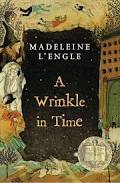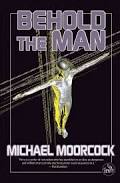There are numerous books with characters that travel through time. However, some of the best in the genre where published years ago. They are still incredible reads today. Here is a list of time travel books we highly recommend you read (again).
 The Time Machine
The Time Machine
Written by: H. G. Wells
Originally published: 1895
The book’s protagonist is an English scientist and gentleman inventor living in Richmond, Surrey, in Victorian England, and identified by a narrator simply as the Time Traveller. The narrator recounts the Traveller’s lecture to his weekly dinner guests that time is simply a fourth dimension and his demonstration of a tabletop model machine for traveling through it. He reveals that he has built a machine capable of carrying a person through time, and returns at dinner the following week to recount a remarkable tale, becoming the new narrator.
 A Connecticut Yankee in King Arthur’s Court
A Connecticut Yankee in King Arthur’s Court
Written by: Mark Twain
Originally published: 1889
In the book, a Yankee engineer from Connecticut is accidentally transported back in time to the court of King Arthur, where he fools the inhabitants of that time into thinking that he is a magician, and soon uses his knowledge of modern technology to become a “magician” in earnest, stunning the English of the Early Middle Ages with such feats as demolitions, fireworks, and the shoring up of a holy well. He attempts to modernize the past, but in the end he is unable to prevent the death of Arthur and an interdict against him by the Catholic Church of the time, which grows fearful of his power.
 The End of Eternity
The End of Eternity
Written by: Isaac Asimov
Originally published: 1955
The Eternity of the title is an organization carefully isolated from the rest of the temporal world, staffed by male humans called Eternals recruited from different eras of human history commencing with the twenty-seventh century. The Eternals are capable of traveling “upwhen” and “downwhen” within Eternity and entering the conventional temporal world at almost any point of their choice, apart from a section of the far future which they mysteriously cannot enter. Collectively they form a corps of Platonic guardians who carry out carefully calculated and planned strategic minimum actions, called Reality Changes, within the temporal world to minimize human suffering.
 The Door Into Summer
The Door Into Summer
Written by: Robert A. Heinlein
Originally published: 1957
The novel opens in 1970 with Daniel Boone Davis, an engineer and inventor, well into a long drinking binge. He has lost his company, Hired Girl, Inc., to his partner Miles Gentry and the company bookkeeper, Belle Darkin. She had been Dan’s fiancée, deceiving him into giving her enough voting stock to allow her and Miles to seize control. Dan’s only friend in the world is his cat, “Pete”, a feisty tomcat who hates going outdoors in the snow.
 A Wrinkle in Time
A Wrinkle in Time
Written by: Madeleine L’Engle
Originally published: 1963
Thirteen-year-old Meg Murry’s classmates and teachers see her as a troublesome and stubborn student. Her family knows that she is emotionally immature but also sees her capable of doing great things. The family includes her beautiful scientist mother, her absent scientist father, her athletic 10-year-old twin brothers, Sandy and Dennys; and her five-year-old brother Charles Wallace Murry, a child prodigy genius who can sometimes read Meg’s mind.
 Slaughterhouse – Five
Slaughterhouse – Five
Written by: Kurt Vonnegut
Originally published: 1969
The story is told in a nonlinear order, and events become clear through flashbacks (or time travel experiences) from the unreliable narrator. He describes the stories of Billy Pilgrim, who believes he was held in an alien zoo and has experienced time travel.
 Behold the Man
Behold the Man
Written by: Michael Moorcock
Originally published: 1969
The story begins with Karl’s violent arrival in the Holy Land of AD 28, where his time machine, a womb-like, fluid-filled sphere, cracks open and becomes useless. By interpolating numerous memories and flashbacks, Moorcock tells the parallel story of Karl’s troubled past in 20th century London, and tries to explain why he’s willing to risk everything to meet Jesus. We learn that Karl has chronic problems with women, homosexual tendencies, an interest in the ideas of Jung, and many neuroses, including a messiah complex.
 Time and Again
Time and Again
Written by: Jack Finney
Originally published: 1970
In November 1970, Simon Morley, an advertising sketch artist, is approached by U.S. Army Major Ruben Prien to participate in a secret government project. He is taken to a huge warehouse on the West Side of Manhattan, where he views what seem to be movie sets, with people acting on them. It seems this is a project to learn whether it is feasible to send people back into the past by what amounts to self-hypnosis—whether, by convincing oneself that one is in the past, not the present, one can make it so.
 The Man Who Folded Himself
The Man Who Folded Himself
Written by: David Gerrold
Originally published: 1973
In 1975, Daniel Eakins, a young college student, is visited by a man claiming to be his “Uncle Jim”. Uncle Jim offers to increase Daniel’s monthly allowance for living expenses as long as Daniel promises to keep a diary. Shortly after, Uncle Jim dies, and Daniel inherits a ‘Timebelt’ from him that allows the wearer to travel through time. Daniel quickly learns how to use the Timebelt and makes a few short jumps into his own future. He meets an alternate version of himself, who accompanies him to a race-track where the pair make a fortune betting on horse-racing. The following day, Daniel realises that it is his turn to guide his younger self through the previous day at the races; through this and other events the time-travelling Daniel learns more about the belt, about the nature of the ‘timestream’, and about his personal identity.
 Kindred
Kindred
Written by: Octavia E. Butler
Originally published: 1979
Part time-travel tale and part slave narrative. The book is the first-person account of a young African-American woman writer, Dana, who finds herself shuttled between her California home in 1976 and a pre-Civil War Maryland plantation. There she meets her ancestors: a spoiled, self-destructive white slave owner and the proud black freewoman he has forced into slavery and concubinage. As her stays in the past become longer, Dana becomes intimately entangled with the plantation community, making hard compromises to survive slavery and to ensure her existence in her own time.
 The Anubis Gate
The Anubis Gate
Written by: Tim Powers
Originally published: 1983
In 1801 the British have risen to power in Egypt and suppress the worship of the old Egyptian gods. A cabal of magicians plan to drive the British out of Egypt by bringing the gods forward in time from an age when they were still powerful and unleashing them on London, thereby destroying the British Empire. In 1802, a failed attempt by the magicians to summon Anubis opens magical gates in a predictable pattern across time and space.
 Outlander
Outlander
Written by: Diana Gabaldon
Originally published: 1991
In 1946, after working apart during the Second World War, British Army nurse Claire Randall and her husband Frank, a history professor, go on a second honeymoon to Inverness, Scotland. Frank conducts research into his family history and Claire goes plant-gathering near standing stones on the hill of Craigh na Dun. She faints when investigating a buzzing noise near the stones; upon waking, she encounters Frank’s ancestor, Captain Jack Randall. Before Captain Randall can take her into custody, he is knocked unconscious by a Scottish Gael who takes Claire to his clansmen. Claire eventually concludes that she has traveled into the past. She represents herself as an English widow who is traveling to France to see her family.
 Dooms Day Book
Dooms Day Book
Written by: Connie Willis
Originally published: 1992
Kivrin Engle, a young historian specializing in medieval history, asks her reluctant instructor (and father figure), Professor James Dunworthy, and the authorities running the project to send her to Oxford in 1320. This period had previously been thought too dangerous, because it stretched the time travel net 300 years earlier than it had ever been used before. Professor Gilchrist, who took charge of the project in the absence of the normal department head, coaxes authorities to allow it, in hopes it would enhance his own prestige, skipping numerous protocols to ensure her safety. Kivrin will be the first historian to visit the period and is confident that she is well prepared for what she will encounter.

